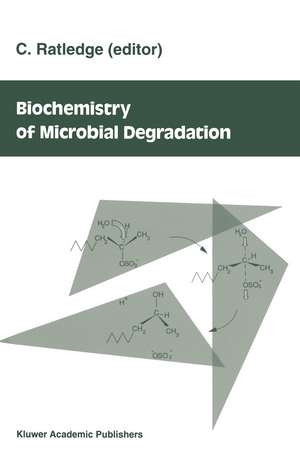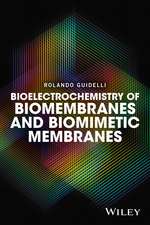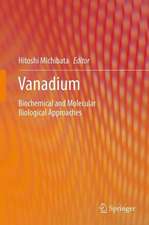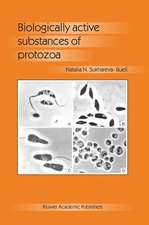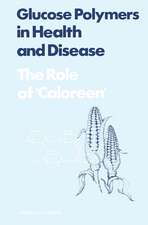Biochemistry of microbial degradation
Editat de Colin Ratledgeen Limba Engleză Paperback – 25 oct 2012
Preț: 407.98 lei
Nou
Puncte Express: 612
Preț estimativ în valută:
78.07€ • 81.67$ • 64.85£
78.07€ • 81.67$ • 64.85£
Carte tipărită la comandă
Livrare economică 02-16 aprilie
Preluare comenzi: 021 569.72.76
Specificații
ISBN-13: 9789401047388
ISBN-10: 9401047383
Pagini: 616
Ilustrații: XIX, 590 p.
Dimensiuni: 160 x 240 x 32 mm
Greutate: 0.89 kg
Ediția:1994
Editura: SPRINGER NETHERLANDS
Colecția Springer
Locul publicării:Dordrecht, Netherlands
ISBN-10: 9401047383
Pagini: 616
Ilustrații: XIX, 590 p.
Dimensiuni: 160 x 240 x 32 mm
Greutate: 0.89 kg
Ediția:1994
Editura: SPRINGER NETHERLANDS
Colecția Springer
Locul publicării:Dordrecht, Netherlands
Public țintă
ResearchCuprins
1. Biodegradation of components of petroleum.- I. Introduction.- II. Uptake of hydrocarbons by microorganisms.- III. Degradation of aliphatic hydrocarbons.- IV. Degradation of cycloaliphatic compounds.- V. Degradation of nitrogen-, sulphur- and oxygen-containing components (NSO) of petroleum.- VI. Genetics of biodegradation.- VII. Relevance of petroleum component biodegradation.- VIII. Conclusions.- 2. Microbial metabolism and transformation of selected monoterpenes.- I. Introduction.- II. Current studies.- III. Cytochrome P450 oxygenases and monoterpene metabolism.- IV. 1,8-Cineole and 1,4-cineole.- V. ?-Pinene and car-3-ene.- VI. Metabolism of monoterpenes by fungi.- 3. Formation and function of biosurfactants for degradation of water-insoluble substrates.- I. Introduction.- II. Structures of extracellular amphiphiles.- III. Biosynthetic routes to biosurfactants.- IV. Microbial growth and kinetics of biosurfactant formation.- V. Biosurfactants in natural habitats.- 4. Biodegradation of oils, fats and fatty acids.- I. Introduction.- II. Microbial utilization of oils and fats.- III. Lipases and phospholipases.- IV. Uptake and oxidation of fatty acids.- 5. Biodegradation of anionic surfactants and related molecules.- I. Introduction.- II. An overview of surfactant biodegradation.- III. Biodegradation pathways, enzymes and mechanisms.- IV. Postscript.- 6. Biochemistry and physiology of the degradation of nitrilotriacetic acid and other metal complexing agents.- I. Introduction.- II. Nitrilotriacetic acid.- III. Other chelating agents.- 7. Enzymes and mechanisms involved in microbial cellulolysis.- I. Introduction.- II. Fungal cellulases.- III. Structure/functional relationships in fungal and bacterial cellulases.- IV. Stereochemical course of hydrolysis by cellulases.-V. Conclusions.- 8. Biodegradation of lignin and hemicelluloses.- I. Introduction.- II. Hemicellulose.- III. Lignin.- IV. Lignin-carbohydrate complexes.- V. Enzymatic treatments of pulps.- VI. Conclusions.- 9. Physiology of microbial degradation of chitin and chitosan.- I. Introduction: chitin and chitosan.- II. Pathways of chitin degradation.- III. Identification and assay of chitinolytic activities.- IV. Autolytic and morphogenetic chitinolysis.- V. Nutritional chitinolysis.- VI. Chitinolysis in pathogenesis and symbiosis.- VII. Degradation of chitosan.- VIII. Biotechnology of chitinases and chitosanases.- IX. Specific inhibitors of chitinases.- X. Sequence homologies of chitinases.- XI. Conclusions.- 10. Biodegradation of starch and ?-glycan polymers.- I. Introduction.- II. Microbial amylosaccharidase synthesis, regulation, and localization.- III. Biochemistry of amylosaccharidases.- IV. Molecular biology of amylosaccharidases.- V. Biotechnology of amylosaccharidases.- VI. Future directions.- 11. The physiology of aromatic hydrocarbon degrading bacteria.- I. Introduction.- II. Benzene.- III. Arenes.- IV. Biphenyl.- V. Tetralin.- VI. Fused-ring aromatic compounds.- VII. Mixed substrates.- VIII. Conclusions.- 12. Microbial dehalogenation of haloaliphatic compounds.- I. Introduction.- II. Dehalogenation of Haloalkanoic Acids (HAAs).- III. Dehalogenation of haloalkanes under aerobic conditions 399.- IV. Dehalogenation of haloalkanes under anaerobic conditions.- V. Dehalogenation of haloalcohols.- VI. Plasmids encoding genes for haloaliphatic dehalogenase.- VII. Conclusions.- 13. Biodegradation of halogenated aromatic compounds.- I. Introduction.- II. Dehalogenation of aromatic compounds.- III. Biodegradation of halogenated benzoic acids.- IV. Biodegradation ofhalogenated benzenes.- V. Biodegradation of halogenated phenols.- VI. Biodegradation of halogenated anilines.- VII. Biodegradation of halogenated phenoxyacetic acids.- VIII. Biodegradation of halogenated biphenyls.- IX. Biodegradation of halogenated dibenzo-p-dioxins and dibenzofurans.- 14. Bacterial degradation of N-heterocyclic compounds.- I. Introduction.- II. Degradation of pyridine and derivatives.- III. Degradation of quinoline and derivatives.- IV. Isoquinoline.- V. The degradation of indole and derivatives.- VI. Concluding remarks.- 15. Biodegradation of inorganic nitrogen compounds.- I. Introduction.- II. Degradation of organic nitrogen compounds by animals.- III. Nitrification in soil and water.- IV. Denitrification.- V. Cyanide production and metabolism.- VI. Summary and conclusions.- 16. Biochemistry of anaerobic biodegradation of aromatic compounds.- I. Introduction.- II. Principles.- III. Anaerobic microorganisms.- IV. Channelling reactions.- V. Ring reduction and hydration.- VI. From alicyclic compounds to central metabolites.- VII. Chimeric pathways.- VIII. Comparison of aerobic and anaerobic pathways.- 17. Biocorrosion: the action of sulphate-reducing bacteria.- I. Introduction.- II. Biofilms.- III. Sulphate-reducing bacteria.- IV. Microbially influenced corrosion.- V. Concluding remarks.- Index of compounds.- Index of organisms.
